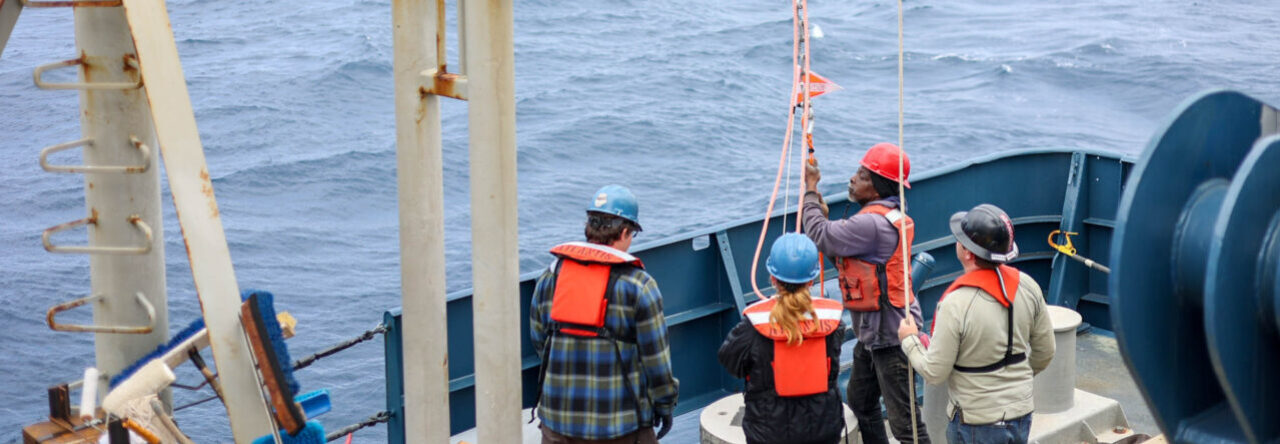The SECURE-IT cyber training cruise aboard the R/V Sikuliaq has come to an end, and I’m writing this final post while taking in the cold Alaskan air after days of navigating the Pacific. It’s hard to put into words how transformative this experience has been, both technically and personally.
Each day onboard was a full-immersion dive into maritime cybersecurity and cyberinfrastructure. We configured segmented networks using Fortinet firewalls, utilized Proxmox virtual environments, and worked with legacy systems still commonly found in real-world maritime operations. We tackled bandwidth limitations, satellite communications, and network segmentation in a way that mirrored actual at-sea constraints—and that’s not something you can fully simulate in a classroom.
One of the most impactful parts of this experience was the people. Having such a diverse crew—ranging from seasoned technologists and marine technicians to undergraduate students from across the country—created an environment rich in what’s known as tacit knowledge. These are the kinds of insights that aren’t always written down—techniques, workarounds, and instincts that come from time spent in the field. Watching the experienced professionals troubleshoot or explain their setups gave me a much deeper appreciation for the human element in technical problem-solving.
Another standout for me was having Tyler Peterson, a former MATE intern, onboard. His background as a marine technician and his experience with more traditional MATE internships helped bridge the gap between the classic marine tech path and this first-of-its-kind cruise focused on Information Technology, cybersecurity, and cyberinfrastructure. While we weren’t supporting an active science mission during this cruise, Tyler helped connect the dots between shipboard IT systems and how they ultimately enable and support scientific research. That context was incredibly valuable—it made the purpose behind the tech we were building feel real and relevant.
Something else that really stuck with me: it takes a variety of disciplines to make scientific research at sea possible. From satellite communications and data acquisition systems to physical deployments like the ARGO floats, the cruise was a reminder that meaningful science only happens when engineers, IT professionals, technicians, and scientists work in harmony. This cruise wasn’t just a training exercise—it was a snapshot of what that collaboration can look like in action.
One of the personal highlights: I earned three cybersecurity certifications during this cruise—two from Fortinet and one awarded by the R/V Sikuliaq team. These credentials not only boosted my technical skill set, but also marked a real milestone in my journey toward becoming a cybersecurity professional in the maritime world.
Massive thanks to the University of Alaska Fairbanks (UAF) for hosting, Fortinet for the technical resources, the MATE program for making this internship possible, the crew of the R/V Sikuliaq, and everyone who made this adventure happen. Special shoutout to Julian Race for leading the charge and creating space for real hands-on learning. I’m leaving this cruise sharper, more inspired, and more confident in my future as a cybersecurity professional in the maritime space.
Until next time—signing off from the Gulf of Alaska.



Leave a Reply